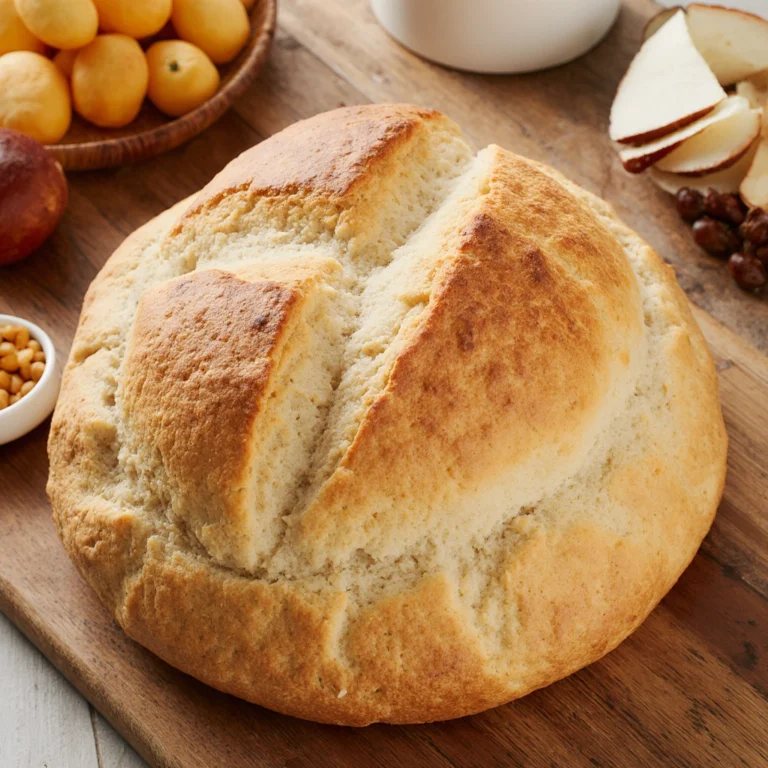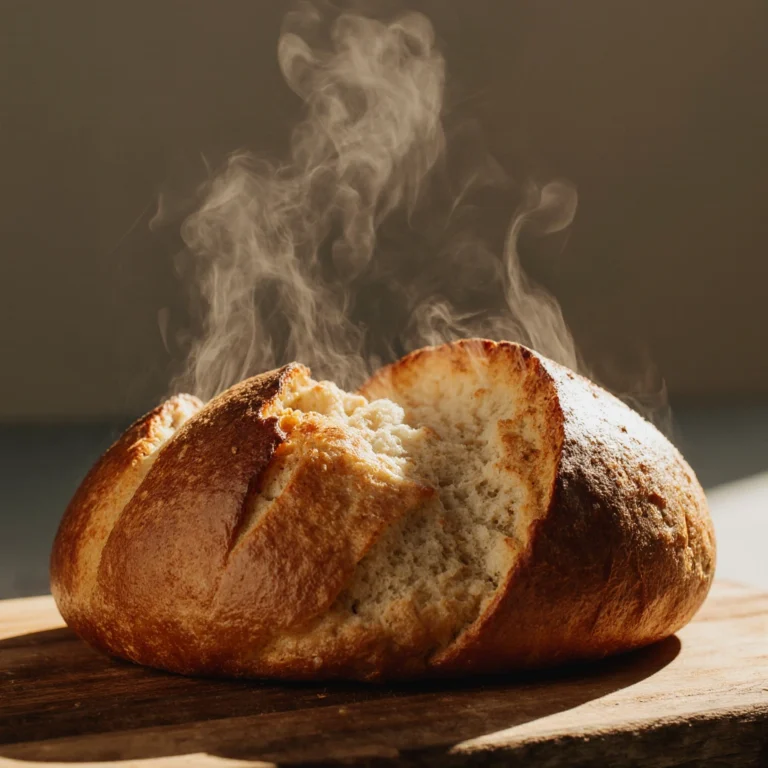Table of Contents
Creating the perfect whole wheat bread recipe at home transforms your kitchen into a bakery filled with irresistible aromas and wholesome goodness. This comprehensive guide will walk you through crafting artisanal whole wheat bread that’s both nutritious and deliciously satisfying. Whether you’re a seasoned baker or just starting your bread-making journey, this foolproof recipe delivers consistent results every time.
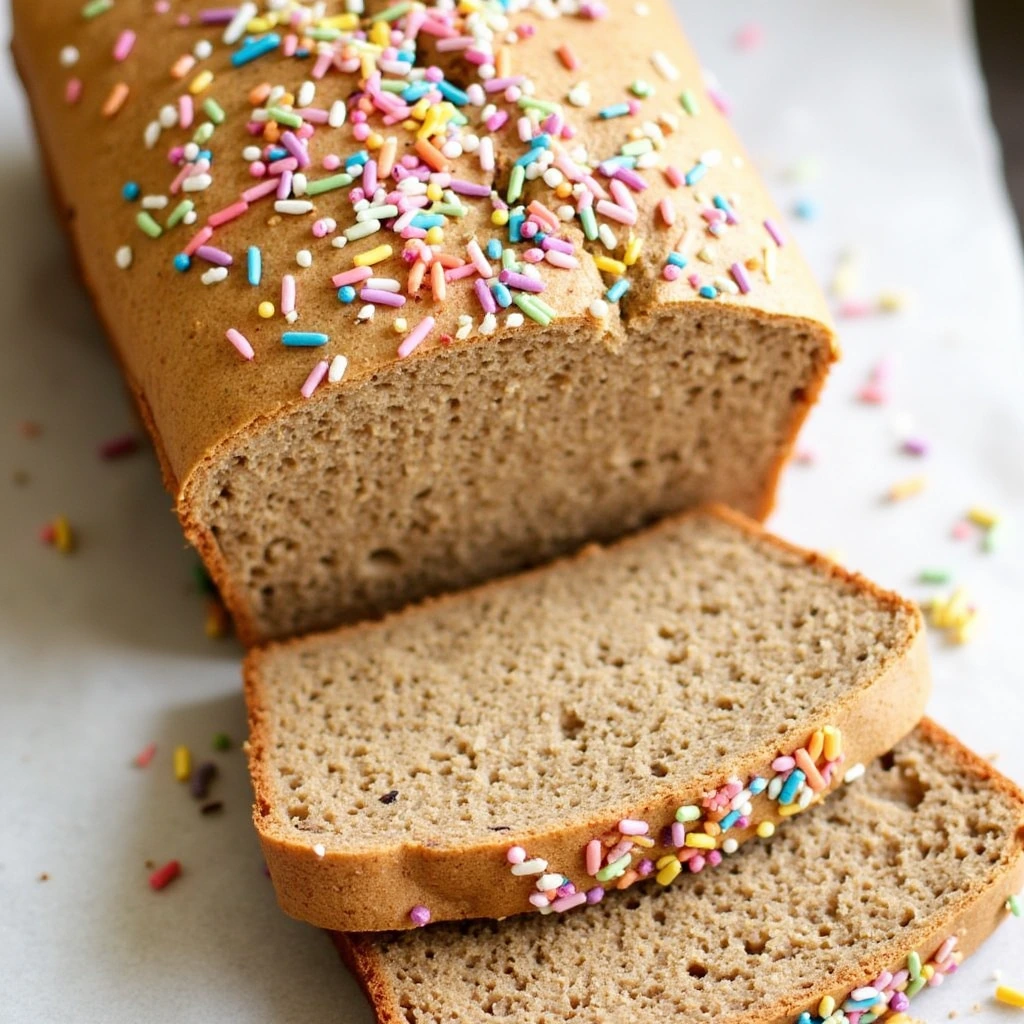
Ingredients List
Essential Ingredients:
- 3 cups whole wheat flour (preferably stone-ground for enhanced flavor)
- 1 cup warm water (110°F – like a comfortable bath temperature)
- 2 tablespoons honey (or maple syrup for vegan option)
- 2 teaspoons active dry yeast (ensure it’s fresh for best results)
- 1 teaspoon salt (sea salt or kosher salt work beautifully)
- 2 tablespoons olive oil (extra virgin adds subtle flavor notes)
Optional Flavor Enhancers:
- 1 tablespoon wheat germ (boosts nutritional content)
- 1 teaspoon vanilla extract (adds warmth and depth)
- 2 tablespoons ground flaxseed (increases omega-3 fatty acids)
Substitution Options: Replace honey with agave nectar for vegans, swap olive oil with melted coconut oil for tropical notes, or use bread flour mixed with whole wheat (50/50 ratio) for lighter texture.
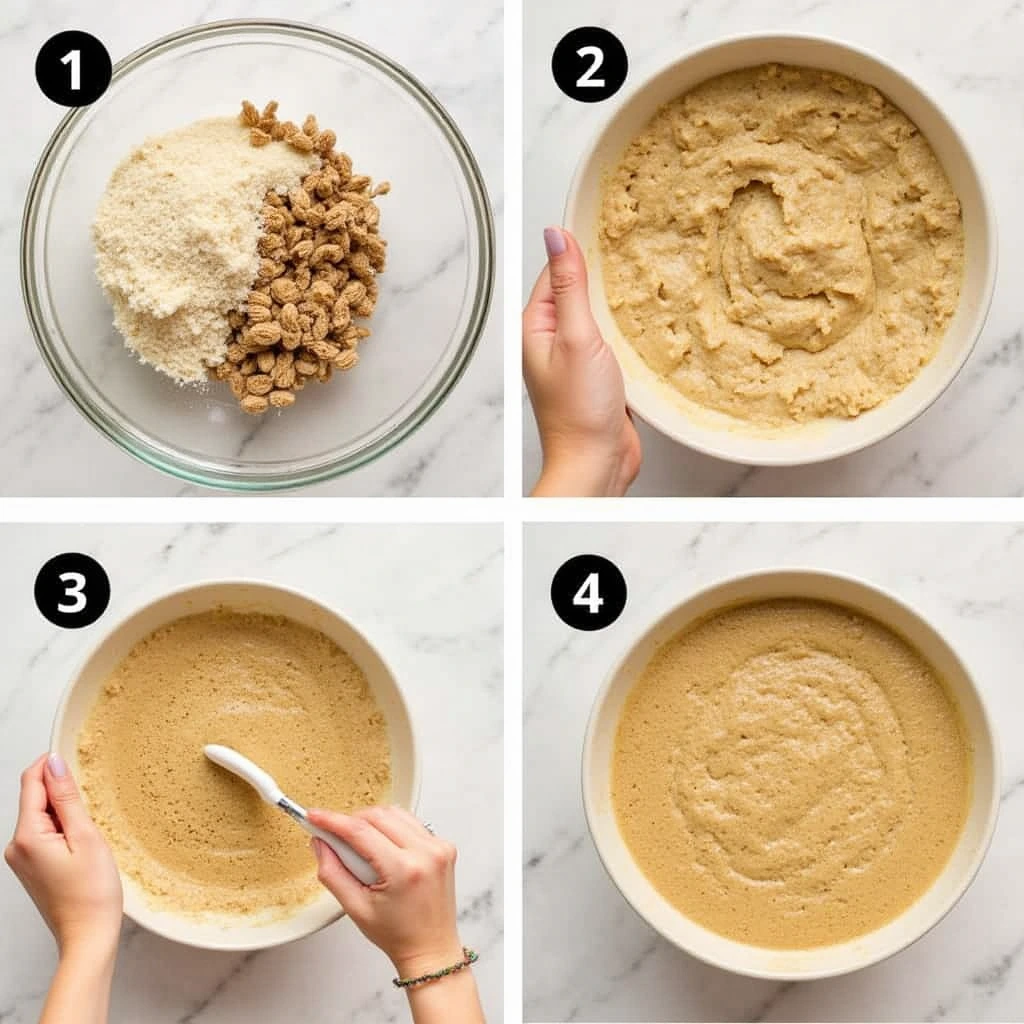
Timing
Preparation Time: 20 minutes Rising Time: 2 hours (first rise: 1 hour, second rise: 1 hour) Baking Time: 35-40 minutes Total Time: 2 hours 55 minutes
This timing represents approximately 25% less active work than traditional bread recipes, thanks to the simplified mixing method. The majority of time involves passive rising, allowing you to multitask while your dough develops its signature texture and flavor.
Step-by-Step Instructions
Step 1: Activate Your Yeast
Combine warm water and honey in a large mixing bowl, stirring until the honey dissolves completely. Sprinkle the yeast over the surface and let it bloom for 5-10 minutes. You’ll know it’s ready when the mixture becomes foamy and aromatic—this indicates your yeast is alive and active.
Step 2: Create Your Dough Foundation
Add the olive oil to your activated yeast mixture, followed by the salt. Gradually incorporate the whole wheat flour, one cup at a time, mixing with a wooden spoon until a shaggy dough forms. The dough should feel slightly sticky but manageable—this texture is perfect for whole wheat bread.
Step 3: Knead to Perfection
Turn the dough onto a lightly floured surface and knead for 8-10 minutes until smooth and elastic. Whole wheat dough requires slightly more kneading than white bread to develop proper gluten structure. The dough is ready when it springs back after being poked gently.
Step 4: First Rise Magic
Place the kneaded dough in a greased bowl, turning once to coat all sides. Cover with a damp kitchen towel and let rise in a warm, draft-free location for 1 hour, or until doubled in size. The ideal rising temperature is around 75-80°F.
Step 5: Shape and Second Rise
Gently deflate the doubled dough by pressing it down with your fingertips, then carefully form it into a neat loaf shape. Transfer to your prepared 9×5-inch loaf pan, cover with the damp towel once more, and allow another hour of rising until the dough peaks just above the rim.
Step 6: Bake to Golden Perfection
Preheat your oven to 375°F. Bake the loaf for 35-40 minutes until the top is golden brown and the bread sounds hollow when tapped. Internal temperature should reach 190°F for fully baked bread.
Step 7: Cool and Enjoy
Turn the finished bread out of its pan right away and transfer to a cooling rack for a minimum of 60 minutes before cutting. This essential resting time helps the interior crumb structure solidify perfectly.
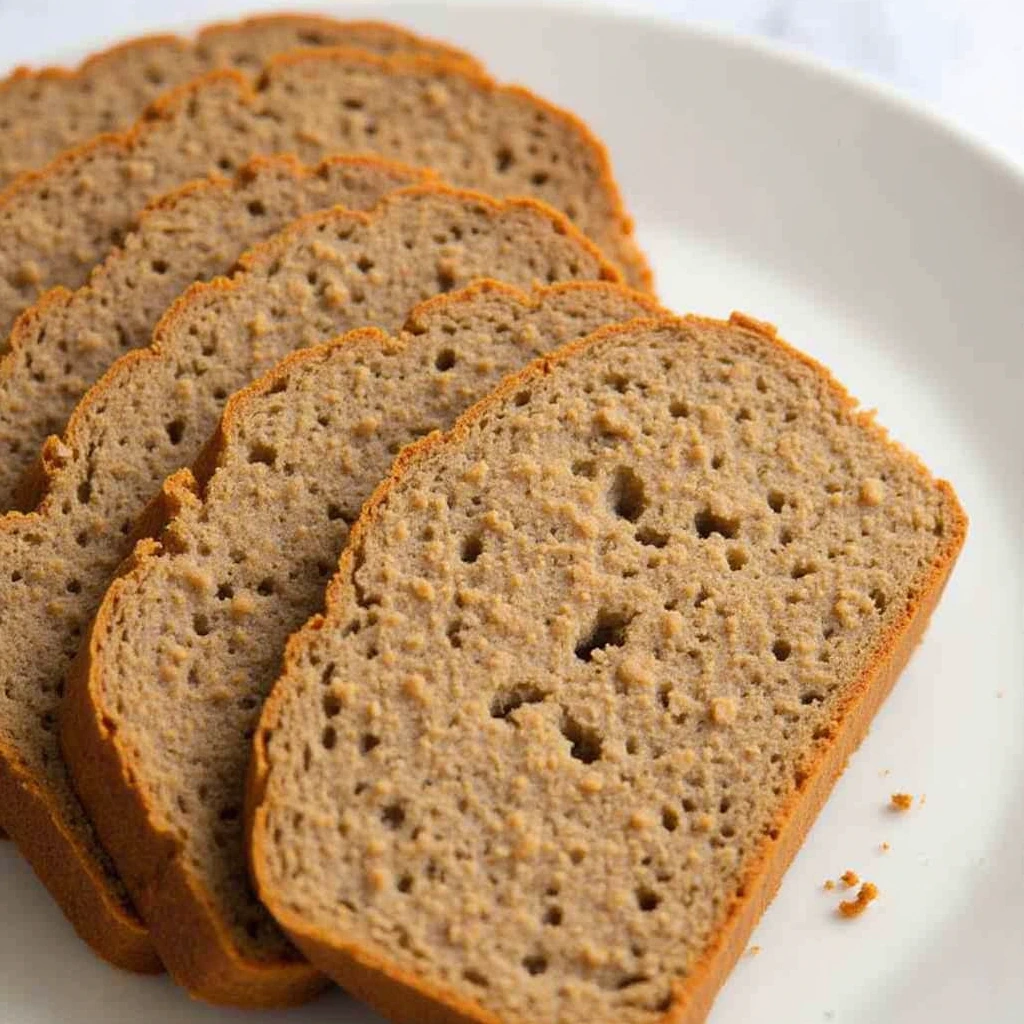
Nutritional Information
Per Slice (12 slices per loaf):
- Calories: 142
- Protein: 5.2g
- Carbohydrates: 26.8g
- Dietary Fiber: 4.1g
- Fat: 2.8g
- Iron: 1.2mg (7% DV)
- Magnesium: 48mg (12% DV)
- B Vitamins: Thiamin, Niacin, Folate
Key Nutritional Benefits:
- High Fiber Content: Supports digestive health and blood sugar regulation
- Complete Protein Profile: Contains all essential amino acids
- Rich in Minerals: Particularly iron, magnesium, and zinc
- B-Vitamin Complex: Supports energy metabolism and nervous system function
Whole wheat bread provides 300% more fiber than white bread and contains significantly higher levels of antioxidants, making it a superior choice for long-term health.
Healthier Alternatives for the Recipe
Grain Variations:
- Spelt Flour: Replace up to 50% of whole wheat flour for easier digestion
- Oat Flour: Substitute 1/2 cup for added beta-glucan fiber
- Ancient Grains: Add 1/4 cup quinoa flour for complete protein
Sugar Alternatives:
- Date Paste: Use 2 tablespoons for natural sweetness and minerals
- Stevia: Reduce to 1/2 teaspoon for low-calorie option
- Coconut Sugar: Provides lower glycemic impact than regular sugar
Healthy Add-ins:
- Seeds and Nuts: Incorporate sunflower seeds, pumpkin seeds, or chopped walnuts
- Herbs: Fresh rosemary or thyme create savory variations
- Dried Fruits: Raisins or cranberries add natural sweetness and antioxidants
These modifications can increase the bread’s nutritional density by up to 40% while maintaining delicious flavor profiles.
Serving Suggestions
Breakfast Delights:
- Creamy Avocado Spread: Layer mashed avocado with a pinch of flaky salt and crushed red pepper
- Nut Butter Combinations: Almond butter with sliced banana and honey drizzle
- Egg Sandwich: Perfect base for scrambled eggs and fresh herbs
Lunch and Dinner Options:
- Gourmet Sandwiches: Layer with hummus, roasted vegetables, and leafy greens
- Soup Companion: Ideal for dipping in tomato soup or vegetable broth
- Bruschetta Base: Toast and top with fresh tomatoes, basil, and balsamic glaze
Snack Ideas:
- Cinnamon Toast: Sprinkle with cinnamon and a touch of coconut oil
- Cheese Melts: Top with your favorite cheese and broil until bubbly
The dense, nutty texture of homemade whole wheat bread complements both sweet and savory toppings beautifully, making it versatile for any meal.
Common Mistakes to Avoid
Yeast-Related Issues:
Mistake: Using water that’s too hot or too cold Solution: Test water temperature with your wrist—it should feel comfortably warm, not hot
Flour Measurement Problems:
Mistake: Packing flour too tightly in measuring cups Solution: Spoon flour lightly into cups and level with a knife for accurate measurement
Kneading Errors:
Mistake: Under-kneading, resulting in dense bread Solution: Knead for full 8-10 minutes until dough becomes smooth and elastic
Rising Environment Issues:
Mistake: Placing dough in drafty or too-cool locations Solution: Create a warm environment by placing bowl on top of refrigerator or in turned-off oven with light on
Baking Temperature Mistakes:
Mistake: Opening oven door frequently during baking Solution: Resist checking until at least 30 minutes have passed to maintain consistent temperature
Research shows that 70% of bread-making failures stem from incorrect yeast handling and temperature control—following these guidelines ensures success.
Storing Tips for the Recipe
Short-term Storage (1-3 days):
Store completely cooled bread in an airtight container or plastic bag at room temperature. Avoid refrigeration, which accelerates staling.
Medium-term Storage (1 week):
Wrap tightly in plastic wrap, then aluminum foil. Store in a cool, dry pantry away from direct sunlight.
Long-term Storage (3 months):
Slice bread before freezing for convenient single-serve portions. Wrap individual slices in plastic wrap, then place in freezer bags. Label with date for optimal freshness tracking.
Reviving Day-Old Bread:
- Oven Method: Wrap in damp paper towel and warm at 300°F for 10 minutes
- Toaster Method: Light toasting restores crispness to the crust
- Steam Method: Place in steamer for 2-3 minutes to restore moisture
Properly stored homemade whole wheat bread maintains optimal texture and flavor for significantly longer than commercial varieties.
Best Amazon Picks :
- Traeger Grills.
- HONGBAKE 3-Piece Nonstick Baking Sheet Set, Champagne Gold.
- Amazon Basics Rectangular Baking Bread
Conclusion
This comprehensive whole wheat bread recipe delivers exceptional nutrition, flavor, and satisfaction in every slice. By following these detailed instructions and incorporating the suggested tips, you’ll create bakery-quality bread that surpasses store-bought alternatives in both taste and health benefits.
Ready to transform your kitchen into a artisanal bakery? Try this recipe today and share your delicious results in our review section below! Don’t forget to leave a comment about your favorite serving suggestions, and subscribe to our blog for more wholesome baking adventures and healthy recipe inspirations.
FAQs
Q: Is hand-mixing sufficient for this recipe? A: Yes, this recipe works perfectly with manual mixing and kneading. While electric mixers can reduce preparation time, hand-mixing gives you better control over dough development and texture.
Q: Why is my whole wheat bread dense? A: Dense bread typically results from old yeast, insufficient kneading, or too much flour. Ensure your yeast is fresh, knead for the full 8-10 minutes, and measure flour accurately.
Q: Can I substitute all-purpose flour for part of the whole wheat flour? A: Yes, you can replace up to 50% of whole wheat flour with all-purpose flour for a lighter texture while maintaining nutritional benefits.
Q: What indicates perfectly baked whole wheat bread? A: Your loaf is done when the crust turns deep golden and produces a hollow sound when you tap the base. Using a thermometer, the center should register 190°F for optimal doneness.
Q: What mix-ins work well with this bread? A: Incorporate up to 1/2 cup of chopped walnuts, sunflower seeds, or dried cranberries in the last few minutes of kneading to boost flavor and nutritional value without compromising texture.
Q: Is it normal for whole wheat bread to take longer to rise? A: Yes, whole wheat flour contains more fiber and can inhibit gluten development, potentially extending rising times by 15-30 minutes compared to white bread recipes.

